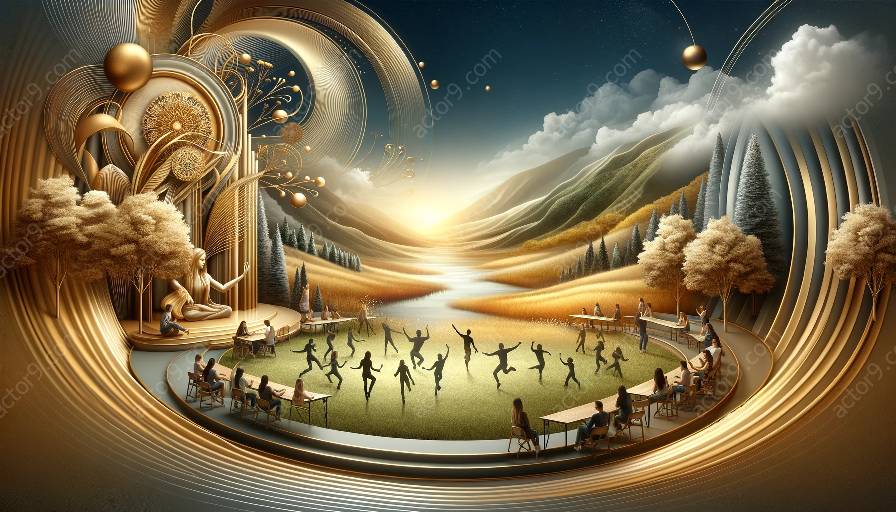Physical theatre is a genre of performance that emphasizes the use of physical movement, gestures, and expressions as the primary means of storytelling and communication. It is rooted in historical performance traditions that have evolved over centuries, shaping the way we perceive and practice theatre today. This topic cluster aims to delve into the rich historical background of performance traditions and explore their enduring influence on physical theatre, particularly in the context of education.
Historical Performance Traditions: Roots of Physical Theatre
The origins of physical theatre can be traced back to ancient performance traditions, such as the Greek and Roman theatres, where physicality and movement were integral components of storytelling. These traditions laid the foundation for the use of the body as a vehicle for conveying narratives and emotions, a concept that continues to be central to physical theatre today. Furthermore, medieval European performance traditions, including commedia dell'arte and the use of masks, contributed to the development of physical expression in theatre, influencing the aesthetics and techniques of physical theatre.
Asian Performance Traditions: Influence on Physical Theatre
Asian performance traditions, particularly those stemming from countries such as Japan, China, and India, have also significantly influenced physical theatre. Practices such as Noh and Kabuki theatre in Japan, as well as martial arts and dance forms, have contributed to the development of physical storytelling techniques and expressive movement in theatre. The incorporation of these traditions has added diversity and depth to the global practice of physical theatre, enriching its aesthetics and physical vocabularies.
Physical Theatre in Education: Fostering Creativity and Expression
Physical theatre holds immense value in educational settings, as it nurtures essential skills such as creativity, collaboration, and communication. The embodiment of characters and narratives through physicality encourages students to explore a range of emotions and perspectives, fostering empathy and understanding. Furthermore, physical theatre provides a platform for students to express themselves non-verbally, breaking the barriers of language and creating inclusive learning environments. By studying historical performance traditions and physical theatre, students gain insight into the cultural and artistic heritage that has shaped theatre across diverse societies.
Contemporary Practice: Blending Tradition and Innovation
Today, physical theatre continues to evolve, drawing inspiration from historical performance traditions while incorporating contemporary influences and innovative approaches. The fusion of classical and modern techniques has led to the emergence of new forms of physical theatre, diversifying its repertoire and expanding its potential for creative expression. By exploring the historical roots of physical theatre, practitioners and educators gain a deeper appreciation for the art form and its ability to transcend cultural boundaries, uniting people through the universal language of the body.
Historical Performance Traditions and Physical Theatre serve as pillars of innovation and artistic development, fueling the evolution of theatre as a multifaceted and inclusive medium of storytelling and expression.




































